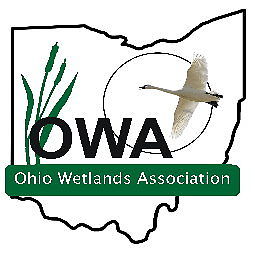Blog
Tagged In: Clean Water, Climate Change, Environmental Health, Lake Erie, Water Pollution, Wildlife
Why we celebrate World Wetlands Day
Ohio Environmental Council, January 27, 2017
Wetlands support rare wildlife
Most of Ohio’s wetlands, especially the Lake Erie Marshes, have been protected for wildlife and often by groups that support duck hunting. We thank them for their pioneering conservation work that, in many cases, stretch back into the 19th century. The coastal wetlands along the western basin of Lake Erie are home to a wide variety of wildlife, notably the Bald Eagle that was nearly extirpated in the 1960’s but retained a viable nesting population there.
Wetlands protect our coastlines, bridges, ports and marinas
Coastal wetlands also help protect the coastline by resisting the surge of waves and waters during heavy storms and nor’easters. The value of coastal swamp forests and marshes can have an estimated worth of thousands of dollars per acre each year in property protection.
Riverine wetlands lie on the floodplains of rivers and streams, becoming a part of the river when precipitation and/or meltwaters swell to overflowing. This temporary accommodation for excess waters relieves the stress downstream. Flood stage heights are reduced, protecting bridges and other infrastructure near river banks.
Wetlands slow the flow of water, reducing erosion that can steal large swaths of adjacent property. That eroded sediment is mostly deposited in the river mouth as water naturally slows entering a lake or other water body. Millions of dollars a year are spent removing these sediments from ports and marinas in order to maintain shipping channels and recreational boating.
Wetlands cleanse our water
Many floodplain wetlands include oxbows and vernal pools. These wetlands are normally not connected to the river flow but support the river nonetheless. Birds, mammals and other animals frequently take advantage of both the still and moving waters along a river channel. The excess water that temporarily settled into the floodplain percolates into the soil and slowly releases, during dryer times, into the river helping to sustain a steady flow and support a sustainable current for a healthy river.
Where water moves through wetlands, it is cleansed. Slow velocities settle out particles that nourish the plants and organisms low on the food chain. Decades of research shows that wetlands remove nutrients like phosphorus and nitrogen that contribute to harmful algal blooms.
Wetlands also remove or denature toxics and dangerous bacteria like E. coli. If even a modest percentage of the wetlands that once surrounded the western basin of Lake Erie were properly and functionally restored, we would not have beach closures, fish consumption warnings or interrupted drinking water supplies.
Wetlands remove greenhouse gases
Wetlands are also one of the strongest carbon sinks on the planet. Simply put, they remove the greenhouse gas, carbon dioxide, and keep it tucked away better than any other habitat. Wetland protection and restoration are necessary components of any effort to reduce the growing threat of climate change.
The frequency of natural disasters worldwide has more than doubled in just 35 years, driven by climate- and weather related hazards like flooding, and droughts. UN Water estimates that 90% of all natural hazards are water-related. The Intergovernmental Panel on Climate Change (IPCC) predicts even more extreme events going forward.
In the Midwest and in Ohio we are already experiencing more drought, more deluges and exaggerated swings in temperature as predicted by climate scientists. In recognition of the theme of this year’s World Wetland Day, “Healthy wetlands help us cope with extreme weather events” do what you can to support wetlands in your community and across Ohio.

Ohio Wetlands Association (OWA) is dedicated to the protection, restoration and enjoyment of Ohio’s wetlands and associated ecosystems through science‐based programs, education and advocacy. For more about OWA see www.OHwetlands.org.
